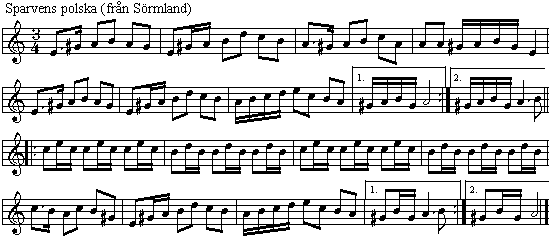SteveShaw wrote:talasiga wrote: The following diatonics do not occur in ITM - Phrygian, Lydian and Locrian.
I play diatonic harmonicas. I play Gillan's Apples, Paudy Scully's Slide and Cronin's Hornpipe, all of which have the tonic note G, on a D harmonica, which means I'm employing Lydian mode. I think.
And I play Connaughtman's rambles ending on F# (though most of the song isn't very prevailingly phrygian, but still).
Just as a general proposition, I think speaking of modes (ionian, dorian, etc etc) is useful in understanding ITM---to a point. The terms, after all, derive from a very different setting (ancient Greek music and medieval gregorian chant). In particular, I think that sometimes assigning modes or even tonal centers to tunes is forced and not a helpful tool to understanding. Also, intonation is probably as important in ITM as tonality and scales or modes (especially if you approach the whole question with an equal-temprament mindset and think that an B is a B is a B. The B will sound different in tune in D major (ionion) than it would in a tune in A Dorian. The whole modes in ITM thing started in the seventies I think (Breathnac wrote about it), and today I am not sure that it really is much more than a metaphor: useful in some context, not useful in others.
Not totally sure what you're saying here. ITM has modes because the modes are evident in the songs. Mode just means 'this song or part of a song" is made up of this pattern of notes from tonality X, and harks back to tonality X". I'm probably misunderstanding something, tho...
What do you mean by intonation? Like, different types of temperaments? But we paly in equal temperament, pipers play in just tuning (right?....

), and if you paly in pythagorean or mean tone or whatever, it all basically sounds the same, or at least recognizable tunes and styles of music...
Also- It's actually uncanny how similar Gregorian chant is to Irish music, especially the vocal traditions. You find a lot of the same types of melodic organization, even specific motives, between them. Gregorian chant's in a lot of ways the foundation of Western music, so I don't see how it could
not have been a heavy influence, directly and indirectly, on Irish music. For one thing, if you hear a certain style of music every week for all your life, and it's the same music your fathers, grandfathers, etc. heard, it's going to stick on you. For another, like I said, you can find some very specific things in chant and later medieval music that are similar to things in Irish music.
For example, this has nothing to do with mode, but just to demonstrate: the use of time and prolation in medieval music- under a certain type of notation used in the Middle Ages, tune's rhythm is defined by its the number of "feet" (perfect time- 3 feet, imperfect time- 2 feet), and the number of minims (kinda like an eighth note) in that beat (greater prolation- 3 minims, lesser prolation- 2 minims). The "feet" were kinda like beats- and I've heard it said that sometimes- like in dance music- the first of each beat tended to be accented or lengthened slightly. So you have four combinations of time and prolation, which are rough equivalents to 9/8, 6/8, 3/4, and 2/4 time signatures in modern notation, but are actually much more similar to the rhythmic organization of slip jigs, single and double jigs, waltzes, and reels/hornpipes (though they're a lot more flexible rhythmically than ours- but classical music's bizarro liek that). So there you go

